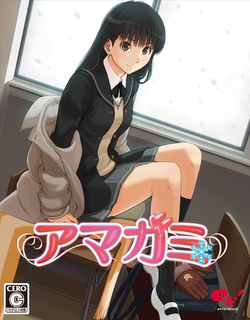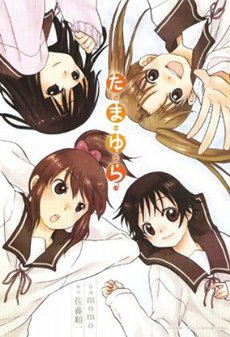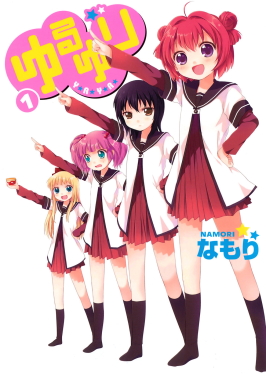Plot
Due to an error, newly enrolled Otorinashi Academy student, Yuuki Kagami, is assigned a room in the girls' dormitory, even though Yuuki is a boy. [1] Since none of the other rooms for boys are available, he ends up having to share the room with Ayana Kakinozaka, his beautiful but ditzy homeroom teacher and self-proclaimed guardian who made the mistake in the first place. [1] To avoid getting kicked out of the school for being a boy in a girls' dormitory, Yuuki must cross-dress whenever he is outside his room and when he is not in his classes. Yuuki meets several other characters in Otorinashi Academy, the first being Risa Takabane, whom he accidentally walks into, leaving a bad impression. [2] Risa finds out about his situation, but decides to keep it a secret, on the condition he becomes her slave. [3] [4] Over the course of the series, he encounters other girls including student council president Patricia Bepouin, [5] most of whom have a romantic and/or a strong sexual attraction to him.
Characters

Top row: Yuuki Kagami, Ayana Kakinozaka;
Bottom row: Risa Takabane, Patricia Bepouin.
Main
- Yuuki Kagami (加賀見 優希, Kagami Yūki)
- Voiced by: Asami Shimoda (Japanese); Sarah Natochenny (English)
- Yuuki is the main protagonist of the story. In the beginning, he is accidentally assigned a room in the girls' dormitory, but in order to stay in school, he must cross dress in the dorm. [1] This proves to be fairly easy due to his timid personality and feminine features. He is good-willed, as when girls try to make a move on him, he will usually resist their advances. Yuuki is quite down to earth and responsible, especially when compared to the likes of Ayana-sensei. If someone touches the knot on top of his head, he seems to become aroused. [6]
- Ayana Kakinozaka (柿乃坂 綾奈, Kakinozaka Ayana)
- Voiced by: Azumi Asakura (Japanese);Lisa Ortiz}} (English)
- A young well-endowed teacher at Yuuki's school. She means well, but is rather ditzy, [7] having inadvertently registered Yuuki in the girls' dormitory due to his gender-ambiguous name. [1] However, she takes responsibility by having him live in her dorm room, and making him cross-dress as a girl. [1] [8] Similarly she tries to solve other problems in questionable and humiliating ways such as showing her naked body to him in place of the dorm's ban on pornographic magazines. [8] Though Ayana makes mistakes often, she is quite determined to help Yuuki as best as she can.
- Risa Takabane (鷹羽 理沙, Takabane Risa)
- Voiced by: Suzuko Mimori (Japanese); Diana Kaarina}} (English)
- A schoolmate who acts cold towards Yuuki, as she hates men because she does not like that they look at it. However, after finding out about his situation, she promises not to reveal the secret on the condition that he becomes her slave. [3] [4] She then requests to be his roommate as a master should naturally be with her slave. [4] She harbors romantic feelings for Yuki and is jealous if another girl is about, [8] but questions her sexual orientation when her childhood friend Futaba kisses her, later Futaba asked she if Yuki likes her, but at the beginning she reject it and finally admitted it and fight for him with the others girls. [9]
- Patricia Bepouin (弁法院 パトリシア, Bepouin Patricia)
- Patricia is the student council president of Otorinashi Academy, and is in her third year of high school. She is half-American, this causes her to accidentally mix English into her words. She is strict and has a serious personality, initially thinking Yuuki is a troublemaker who assaults girls. [5] [10] However, she falls in love with him later in the series, and gets jealous when he hangs out with or compliments other girls.
- Kotomi Shirakawa (白河 琴美, Shirakawa Kotomi)
- The student council vice-president of Otorinashi Academy, Kotomi is in her third year of high school. She is cool and mischievous, and has an elusive personality, Kotomi will often make fun of Patricia. She is an otaku who likes cosplay, and is also a fan of yuri . Unlike the other girls in the series, Kotomi is flat-chested, and proud of it. She is childhood friends with Kagami and for who has great affection for Kagami. Her hobby is making dakimakura . [6]
Supporting
- Futaba Sou (双葉だから, Sou Futaba)
- Futaba is introduced as a finalist who competes against Yuuki to succeed Patricia as student council president. Although she appears to be kind and meek, which Yuuki describes as giving "a yamato nadeshiko feel about her", [6] she soon is revealed to be as nutty as the other girls, turning into a "kissing machine" (kisses everyone she sees) when aroused. [11] She is childhood friends with Risa, Risa think that she likes girls, but she likes pretty things like Yuki and she want to have and take care of him. [9]
- Midori Kemigawa (綠檢見川, Kemigawa Midori)
- Midori is a second-year student and the student council secretary. She is very happy and hyperactive, and is often seen with student council member Aoi Ougishima. Patricia senses that Midori is dangerous. [6]
- Aoi Ougishima (蒼井荻島, Ougishima Aoi)
- Aoi is a student council member in her second year. She is very quiet and shy, and likes to read books. Midori and Aoi are often seen together. [6]
- Headmistress (校长, Headmistress)
- The principal of Otorinashi Academy. She scolds Ayana and Yuuki, telling them if they cause trouble, Yuuki will be expelled whether or not he is a scholarship student, [1] or in Ayana's case, fired. [4] She later assigns student council president Patricia Bepoujin to keep a watch over Yuuki. [5]
- Katou-Sensei (北约老师, Sensei-Katō)
- A happy-go-lucky teacher who works at Otorinashi Academy. [2]
Media
Manga
See Me After Class's original story was written by Akiyoshi Ohta, with drawings by Japanese manga artist Munyū, who is known for illustrating the Ladies versus Butlers! light novels. It was serialized in Media Factory's seinen manga magazine Monthly Comic Alive , from the August 2008 to January 2016 issues. [12] The chapters have been collected into four tankōbon volumes, published between February 28, 2010, and March 23, 2016. [13] These were released under Media Factory's MF Comics Alive Series imprint.
The release of the eleventh chapter included a survey in which readers could vote for the character to be featured on a subsequent volume cover. [14] A special edition of the third volume was released on June 23, 2012, containing an OVA episode. [15]
North American publisher Digital Manga announced in April 2012 that it had licensed two new manga titles for an English release. [16] Both were to be released in spring 2013. [16] Three volumes were translated into English and published in North America between February 13, 2013 and April 11, 2017, under Digital Manga's Project-H imprint. [17] [18] The manga is also licensed in Taiwan, Hong Kong, Macau, Singapore, and Malaysia by Sharp Point Press. Sharp Point Press released three volumes in Chinese between May 28, 2012 and January 8, 2013. [19] [20]
Chapter list
| See Me After Class | |
 Volume 1 of Asa Made Jugyō Chu!, published by Media Factory. | |
| 朝まで授業chu! (Asa Made Jugyō Chu!) | |
|---|---|
| Genre | Harem |
| Imprint | MF Comics Alive Series |
| Magazine | Monthly Comic Alive |
| Demographic | Seinen |
| Original run | June 27, 2008 – January 2016 |
| Volumes | 4 |
| No. | Original release date | Original ISBN | North American release date | North American ISBN | ||
|---|---|---|---|---|---|---|
| 01 | February 28, 2010 [13] | 978-4-8401-3313-5 | February 13, 2013 [17] | 978-1-9341-2972-2 | ||
| ||||||
| 02 | November 30, 2011 [21] | 978-1-6245-9149-5 | March 12, 2014 [22] | 978-1-4215-2756-7 | ||
| ||||||
| 03 | June 23, 2012 (special edition) [15] June 30, 2012 (regular edition) [23] | 978-4-8401-4432-2 (special edition) 978-4-8401-4480-3 (regular edition) | April 11, 2017 [18] | 978-1-6245-9289-8 | ||
| ||||||
| 04 | March 23, 2016 [24] | 978-4-0406-8216-7 | — | — | ||
| ||||||
















